Emerging Space Technologies | Science & Technology for UPSC CSE PDF Download
| Table of contents |

|
| Introduction to Emerging Space Technologies |

|
| CubeSats |

|
| SmallSat Constellations |

|
| Laser Communications |

|
| Nuclear Propulsion |

|
| Broader Impacts and Integration |

|
| Challenges and Way Forward |

|
Introduction to Emerging Space Technologies
Emerging space technologies are reshaping the global space landscape by enabling cost-effective, scalable, and efficient solutions for exploration, communication, and commercialization. Key technologies like CubeSats, SmallSat constellations, laser communications, and nuclear propulsion address challenges such as high launch costs, slow data transfer rates, and long interplanetary travel times. As of mid-2025, the global space economy exceeds $500 billion, with small satellites driving 40% of growth and advanced propulsion systems paving the way for deep-space missions. These advancements support applications in Earth observation (EO), global connectivity, interplanetary exploration, and strategic defense, aligning with initiatives like NASA's Artemis program, India's space reforms, and commercial ventures by SpaceX and Starlink.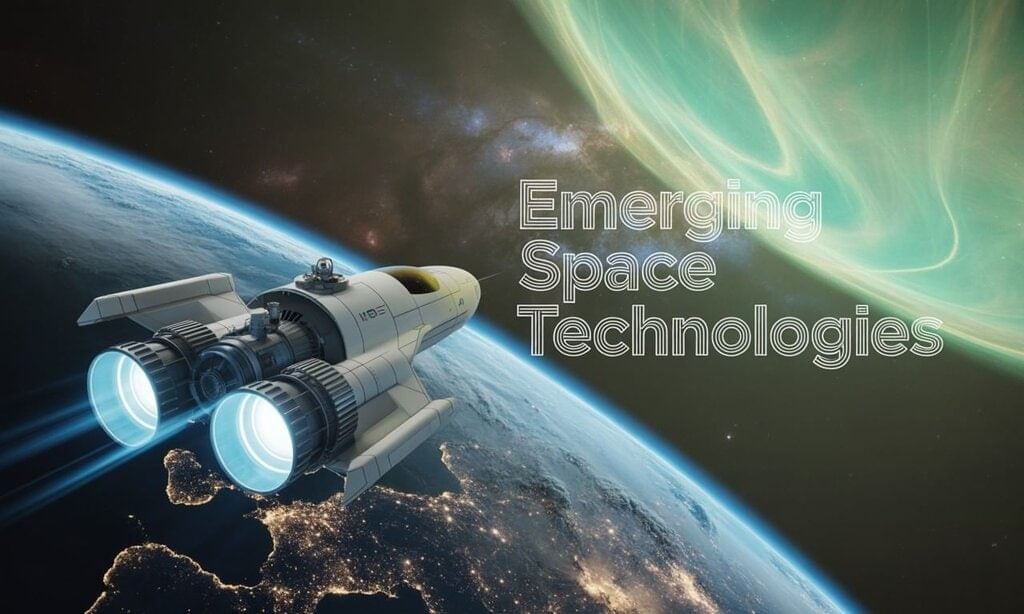
Key Drivers and Context
Economic Impact: The global space economy is projected to reach $1 trillion by 2040, with small satellites (CubeSats and SmallSats) contributing significantly due to their low cost and rapid deployment. In 2024, the CubeSat market was valued at $448.5 million, growing at a 15.38% CAGR to 2033.
Technological Advancements: Innovations in miniaturization, AI-driven autonomy, high-speed laser communications, and efficient propulsion systems are reducing barriers to space access and enabling new mission profiles.
Strategic Relevance: Technologies support national security (e.g., surveillance constellations), economic inclusion (e.g., satellite internet in remote areas), and scientific exploration (e.g., exoplanet studies). India's role is expanding through ISRO's CubeSat missions and private startups like Pixxel.
Recent Developments:
CubeSats: Georgia Tech's NASA-funded CubeSats for exoplanet detection and autonomy improvements; Naval Postgraduate School's Otter CubeSat launch for international collaboration.
SmallSat Constellations: Growth in international constellations (e.g., Sateliot's 5 new satellites); focus on automation and resilience at SmallSat 2025 conference.
Laser Communications: NASA's Deep Space Optical Communications (DSOC) tests; BlueHalo's multi-orbit laser link demo; Spire's two-way optical inter-satellite links (OISLs).
Nuclear Propulsion: NASA contracts to Ultra Safe Nuclear and General Atomics for lunar reactors; DARPA's nuclear thermal rocket (NTR) targeted for 2027.
India-Specific: ISRO's CubeSat contributions to EO and disaster management; private sector involvement in SmallSat constellations via startups like Pixxel and Skyroot.
CubeSats
CubeSats are standardized, miniaturized satellites (1-36 kg) following the CubeSat Design Specification (CDS), typically built in units of 1U (10x10x10 cm). They offer low-cost access to space ($50,000-$500,000 per unit), rapid development cycles (6-24 months), and rideshare launch opportunities, making them accessible to universities, startups, and governments.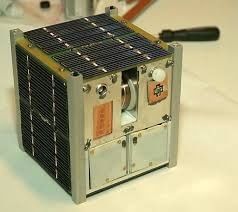 CubeSats
CubeSats
Key Features and Technologies
Design: Modular units (1U, 3U, 6U, 12U); lightweight materials for cost efficiency.
Payloads: Cameras (optical/thermal), sensors (e.g., magnetometers), spectrometers for EO, communications, and scientific missions.
Propulsion: Miniaturized ion thrusters or cold-gas systems for orbit adjustments; emerging electric propulsion for extended missions.
Autonomy: AI and machine learning for onboard data processing, navigation, and collision avoidance.
Power: Solar panels with high-efficiency batteries; energy management for small form factors.
Applications
Scientific: Exoplanet detection (e.g., Georgia Tech's 2025 NASA-funded mission for life search thousands of light-years away); space weather studies.
Commercial: IoT connectivity, precision agriculture, and weather forecasting.
Educational: University-led missions for training and research (e.g., India's Anna University CubeSat).
Defense: Surveillance, signal intelligence, and rapid-response monitoring.
Recent Developments
Georgia Tech: Developed CubeSats for tracking and autonomy, funded by NASA for exoplanet studies; focus on life-detection capabilities.
Naval Postgraduate School (NPS): Launched Otter CubeSat in 2025, fostering international collaboration in space technology development.
Market Growth: CubeSat market valued at $448.5 million in 2024, with a 15.38% CAGR to 2033; over 4,400 nanosats tracked globally by 2025.
India-Specific: ISRO's CubeSat missions for EO and disaster management; private startups like Pixxel deploying CubeSats for hyperspectral imaging.
Trends: Advanced propulsion (e.g., water-based thrusters), increased autonomy, and integration with constellations. Challenges include launch delays (e.g., lunar CubeSat setbacks).
Future Outlook
Integration with SmallSat constellations for global coverage.
Emerging trends: In-orbit manufacturing, debris mitigation tech, and CubeSats for lunar/planetary exploration.
India’s Role: ISRO's focus on small satellite launches via SSLV; private sector scaling CubeSat production.
SmallSat Constellations
SmallSats (under 500 kg, typically 10-200 kg) form networked constellations in Low Earth Orbit (LEO) or Medium Earth Orbit (MEO) for persistent, global coverage. They are 10-100x cheaper than traditional satellites ($1-10 million vs. $100-500 million) and offer redundancy, scalability, and rapid refresh cycles.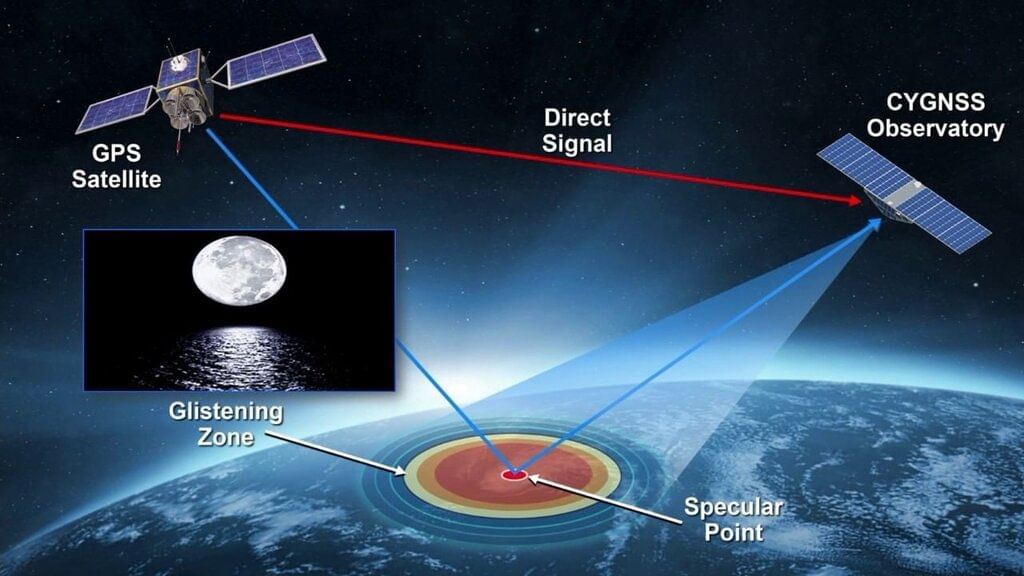 SmallSat Constellations
SmallSat Constellations
Key Features and Technologies
Design: Mini-class (201-600 kg) or smaller; modular for mass production.
Networking: Inter-satellite links (ISLs) using radio or laser for low-latency data transfer.
Advancements: AI for autonomous operations; propulsion for life extension (e.g., electric thrusters); robotics for in-orbit servicing.
Orbits: LEO (500-2,000 km) for low latency; MEO for broader coverage.
Applications
Earth Observation: High-frequency imaging for agriculture, urban planning, and disaster response (e.g., flood monitoring).
Communications: Broadband (e.g., Starlink's 6,000+ satellites), IoT, and 5G/6G connectivity.
Defense: Persistent surveillance, missile tracking, and resilient networks.
Recent Developments
BryceTech Report: Growth in international constellations (Europe, Japan, South Korea); 11,700+ active satellites by mid-2025.
Sateliot: Launched 5 new SmallSats for IoT connectivity; plans further expansion.
Conferences: SmallSat 2025 emphasized automation; Summit on Earth Observation highlighted resilience and SAR (Synthetic Aperture Radar) capabilities.
Market Trends: Mini-class SmallSats dominate; SAR constellations projected to meet 65% of EO needs by 2030.
Launch Services: Affordable rideshare options; market projected to grow 2025-2032.
India-Specific: Private startups like Pixxel and Skyroot contribute to EO and communication constellations; ISRO's SSLV supports SmallSat launches.
Future Outlook
Mega-constellations (60,000-100,000 satellites by 2030) for global internet and EO.
Integration with laser communications for higher bandwidth.
India’s Role: Private sector scaling SmallSat production; ISRO's focus on cost-effective launches.

Laser Communications
Laser (optical) communications use infrared light to transmit data, offering 10-100x higher bandwidth (up to 10 Gbps) than radio frequency (RF) systems, with lower power consumption, reduced interference, and enhanced security due to narrow beams.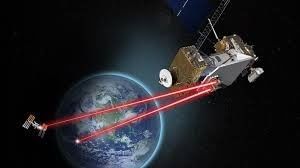 Laser Communications
Laser Communications
Key Features and Technologies
Terminals: Compact laser transceivers with precise pointing (0.01° accuracy); adaptive optics to mitigate atmospheric distortion.
Advantages: High data rates (e.g., 1.2 Gbps from Moon); secure, low-latency links; lightweight systems (5-10 kg vs. 50 kg for RF).
Challenges: Cloud cover and atmospheric turbulence; requires line-of-sight.
Components: Photonic chips, high-power lasers, and beam-steering tech.
Applications
Constellations: Inter-satellite links (ISLs) for mega-constellations like Starlink, enabling global broadband.
Deep Space: High-speed data for Mars and lunar missions (e.g., NASA's DSOC).
Defense: Secure, jam-resistant communications for military satellites.
Commercial: High-throughput satellite-to-ground links for telecom and EO.
Recent Developments
NASA: Deep Space Optical Communications (DSOC) tested 1.2 Gbps from 290 million miles; plans for full-power systems by late 2025.
BlueHalo: Demonstrated long-haul multi-orbit laser links for defense applications.
Spire Global: Achieved two-way OISL; plans 3 more satellites for optical network expansion.
GAO Report: Urged space-based laser demos to address readiness gaps for Space Development Agency (SDA).
Market: Optical comms market at 40% CAGR, projected to reach $15 billion by 2032; photonics driving growth.
India-Specific: ISRO exploring laser comms for future missions; private startups like Astrogate Labs developing optical terminals.
Trends: Laser vs. RF comparisons highlight viability for Mars; focus on multi-orbit scalability.
Future Outlook
Deployment of full-power optical systems by late 2025 for constellations and deep space.
Integration with SmallSat constellations for seamless global networks.
India’s Role: Potential adoption in ISRO’s Gaganyaan and Chandrayaan missions; private sector R&D in optical terminals.
Nuclear Propulsion
Nuclear propulsion leverages fission or fusion to provide efficient thrust, achieving 2-3x higher specific impulse (800-5,000 seconds) than chemical rockets, enabling faster deep-space travel and sustained power for bases.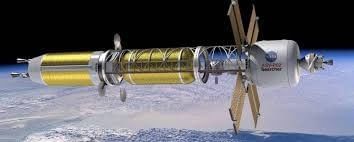 Nuclear Propulsion
Nuclear Propulsion
Key Features and Technologies
Types:
Nuclear Thermal Propulsion (NTP): Uses fission to heat propellant (e.g., hydrogen), achieving 800-1,000 seconds specific impulse.
Nuclear Electric Propulsion (NEP): Powers ion thrusters via reactors, offering 1,000-5,000 seconds specific impulse.
Advantages: Reduces Mars transit to 45-90 days (vs. 6-9 months); provides continuous power for lunar/Mars bases.
Safety: Reactors activated in orbit; robust shielding to mitigate radiation risks.
Components: Compact reactors (10-100 kW), high-efficiency thrusters, and thermal management systems.
Applications
Exploration: Crewed Mars missions, outer planet probes (e.g., Jupiter, Saturn).
Bases: Lunar and Martian surface reactors for power (100 kW+).
Defense: Agile, high-thrust systems for rapid-response satellites.
Commercial: Potential for cargo transport and in-space manufacturing.
Recent Developments
NASA: Awarded contracts to Ultra Safe Nuclear and General Atomics for lunar fission reactors (target: 2030 deployment); NEP for Mars missions.
DARPA: DRACO program advancing NTR for cislunar operations, targeting 2027 demo.
SPAR Institute: Developing nuclear propulsion for U.S. Space Force applications.
Europe: NTP research for faster interplanetary travel; focus on reusable systems.
Westinghouse: Designed microreactor for NASA’s lunar base power needs.
Conferences: NETS 2025 highlighted fission surface power and nuclear propulsion trends.
Trends: Global race with China/Russia for nuclear space tech; focus on safety and scalability.
India-Specific: ISRO exploring nuclear propulsion for deep-space missions (e.g., Venus orbiter); preliminary R&D in nuclear thermal systems.
Future Outlook
NEP systems for Mars missions by 2030; NTP demos by 2027.
Integration with CubeSats/SmallSats for long-duration missions.
India’s Role: Potential collaboration with NASA/ESA; focus on nuclear tech for Chandrayaan-4 and beyond.
Broader Impacts and Integration
Achievements
Global: Over 11,700 active satellites, with CubeSats and SmallSats dominating; laser comms achieving multi-orbit links; nuclear propulsion contracts for lunar bases.
India: Private startups like Pixxel and Astrogate Labs advancing CubeSats and laser comms; ISRO’s SSLV supporting SmallSat launches.
Integration: CubeSats in constellations using laser links for high-speed data; nuclear propulsion enabling long-duration missions.
Global Impact
Economic: SmallSats drive 40% of space economy growth; laser comms market to $15B by 2032.
Scientific: CubeSats for exoplanet studies; nuclear propulsion for outer planet exploration.
Strategic: Enhanced EO and secure communications for defense; India’s spy satellite projects.
Recent
Agnikul Cosmos’ 3D-printed rocket engine patent; Skyroot’s Kalam-1200 test in India.
NASA’s NISAR mission (early 2025) with ISRO for EO.
Stanford Review highlights CubeSat and SmallSat implications for global connectivity.
Challenges and Way Forward
Challenges
Technical: Space debris (60,000+ objects by 2030); laser comms’ atmospheric limitations; nuclear propulsion’s high costs and safety concerns.
Regulatory: International treaties (e.g., Outer Space Treaty) for nuclear tech; spectrum allocation for laser comms.
Economic: High R&D costs; dependency on government funding for nuclear propulsion.
Way Forward
Innovation: Develop debris mitigation tech; advance adaptive optics for laser comms; scale nuclear reactors for efficiency.
Collaboration: India’s role in Artemis Accords; partnerships with NASA/ESA for nuclear and laser tech.
Policy: Strengthen FDI in India’s space sector; align with global sustainability standards (e.g., UN guidelines on debris).
|
91 videos|513 docs|212 tests
|
FAQs on Emerging Space Technologies - Science & Technology for UPSC CSE
| 1. What are CubeSats and how do they contribute to space exploration? |  |
| 2. What are SmallSat constellations and their significance in modern communication? |  |
| 3. How do laser communications enhance satellite communication systems? |  |
| 4. What role does nuclear propulsion play in future space missions? |  |
| 5. What are the challenges associated with emerging space technologies and their broader impacts? |  |



















